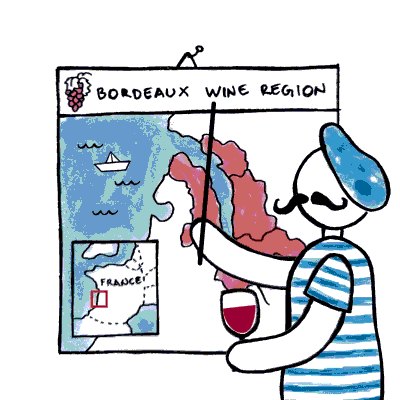Lafite, Ducru-Beaucaillou, Lynch-Bages... what is the common point between those wineries? They are all part of the 1855 classification.

Over the last 160 years, the famous ranking seems to be the same. It has remained almost unchanged, but what is the story behind it?
Universal Exposition in Paris, 1855

Palais de l'lndustrie in Paris, where the 1855 Universal Exposition was held
In 1853, Napoleon III announced that the Universal Exhibition would be held in Paris two years later. But in order to differentiate it from the 1851 one in London, the emperor wanted to bring more French culture into the fair - and wine was a great card to play.

Emperor of France, Napoleon III
Therefore, Bordeaux Chamber of Commerce was appointed to arrange the wine exhibitions, but no one in the union wanted to take on the burden and shirk their responsibilities.

Finally they asked the wine merchants' organization, the Syndicat of Courtiers, to develop a complete list ranked from 1 to 5. It was in this context that the 1855 classification was born.

One of the original classifications' documents
However, the courtiers were well aware of the controversy it would cause, so they added a cautious statement:" We have not tried to create an official ranking, but only to offer you a sketch drawn from the very best sources."
The 1855 Classification

The 1855 classification has two main sections actually - the Médoc classification for red wines plus the Sauternes and Barsac classification for sweet white wines. All the wines that are selected have right to be labeled "Grand Cru Classé en 1855"(often known as GCC).

In the original list, there are 58 châteaux in the Médoc classification: 4 Premier Crus, 12 Second Crus, 14 Third Crus, 11 Fourth Crus and 17 Fifth Crus. All of them were located in the Médoc region, with the exception of one Premier Cru, Haut-Brion, which was located in the Graves sub-region.

Initially, 26 wines from the Sauternes and Barsac regions were selected for the sweet white wine classification. These included 1 Premier Cru Supérieur (Château d'Yquem), 9 Premier Crus and 11 Second Crus.
The unchanged 1855 classification

Baron Philippe de Rothschild
The most interesting tidbit of the 1855 classification was the promotion of Château Mouton, when the Rothschild family acquired the poorly run winery in 1853 and worked to improve its wines quality.

Later, Baron Philippe de Rothschild, with his unique management philosophy and personal influence, successfully led the winery to be promoted to Premier Cru in 1973.

Carl Laubin's illustration of all the GCC. Can you recognize each one?
Apart from this, minor changes occurred with the addition of a few wineries in both the red and sweet white wines rankings (which saw their total numbers of wineries respectively brought from 57 to 61 and from 21 to 27).
How to choose one?

When choosing a GCC, vintage is the main factor to decide. This will determine the quality and the price, as it changes every year in Bordeaux. The price can vary from 1000rmb to 7000rmb for recent vintages.

Depending on their vintage and ranking level, red wines will be able to last from 10 years to 30 years and more for the best examples. Sweet white wines have an almost endless ageing capacity, again varying from a vintage and a ranking level to another.

Château Lafite 2009, considered one their best vintages ever, capable to age for decades to come.
Red GCC can age well mainly because of their high proportion of cabernet sauvignon in their blend, increasing the tannic and acidic structure, which will soften with age. Sweet GCC are protected by their high sugar content, as well as their high acidity level.

Some say that maintaining the 1855 classification is unfair. Anyways, they still represent some of the best wines on the planet, and are a heritage from history. If you get the chance, let's experience for yourself the unique charm of the wines from the 1855 classification!
